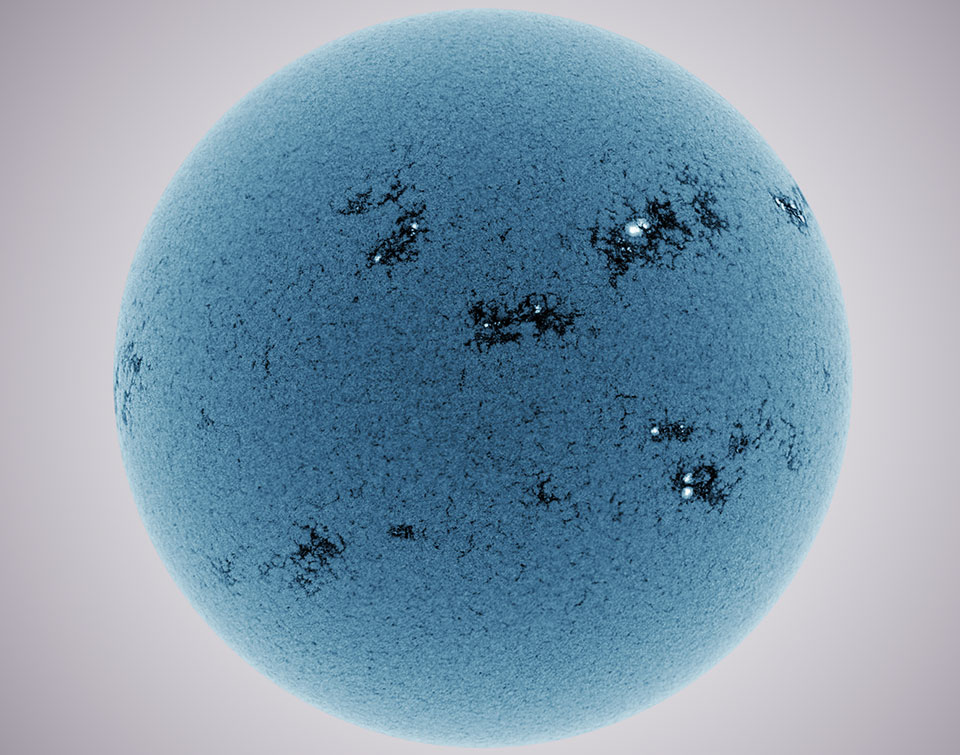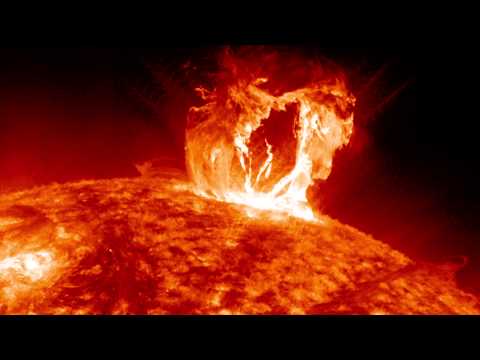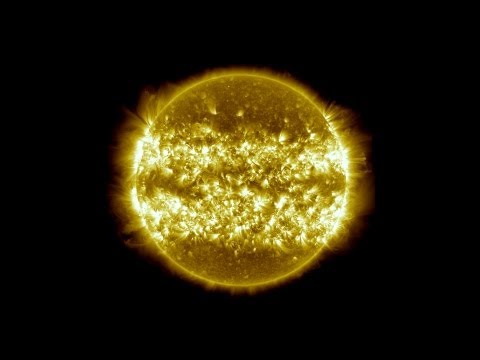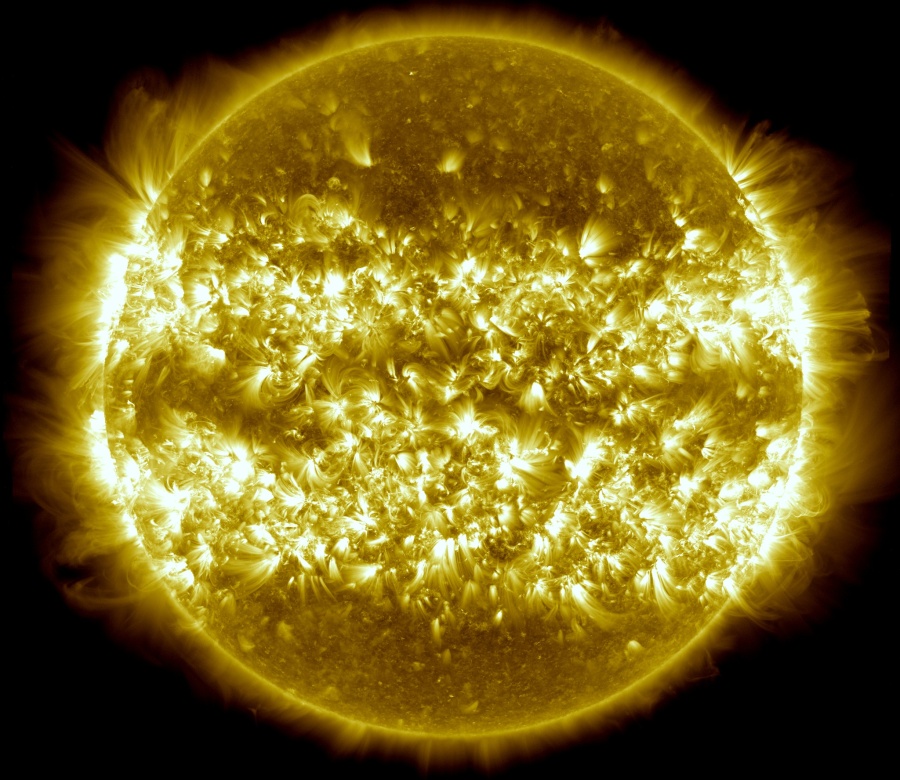Blue sun bursting
Our Sun is not a giant blueberry. Our Sun can be made to appear similar to the diminutive fruit, however, by imaging it in a specific color of extreme violet light called CaK that is emitted by the very slight abundance of ionized Calcium in the Sun’s atmosphere, and then false color-inverting the image. This solar depiction is actually scientifically illuminating as a level of the Sun’s chromosphere appears quite prominent, showing a crackly textured surface, cool sunspots appearing distinctly bright, and surrounding hot active regions appearing distinctly dark.






